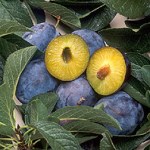innate immunity
Applause for Plant Physiologist Helen Stafford who bequeathed an astonishing $8M to Reed College in her will. As a woman scientist in the 1950s, Stafford was ineligible for many jobs. Reed College, not deterred by her sex, offered her a position. She went on to establish a successful career and inspired many young scientists. Here is a short story of how she influenced my career.
The windowless room, dank an dark, was not an obvious place for inspiration. I took notes, wondering if I would be able to glean anything meaningful from Professor Helen Stafford's (1922-2011) meandering lecture. I…
Applause for Plant Physiologist Helen Stafford who left the Reed College Biology Department $1M. As a woman scientist in the 1950s, Stafford was ineligible for many jobs. Reed College, not deterred by her sex, offered her a position. She went on to establish a successful career and inspired many young scientists. Here is a short story of how she influenced my career.
The windowless room, dank an dark, was not an obvious place for inspiration. I took notes, wondering if I would be able to glean anything meaningful from Professor Helen Stafford's (1922-2011) meandering lecture. I was skeptical…
Applause for Plant Physiologist Helen Stafford who left the Reed College Biology Department $1M. As a woman scientist in the 1950s, Stafford was ineligible for many jobs. Reed College, not deterred by her sex, offered her a position. She went on to establish a successful career and inspired many young scientists. Here is a short story of how she influenced my career.
The windowless room, dank an dark, was not an obvious place for inspiration. I took notes, wondering if I would be able to glean anything meaningful from Professor Helen Stafford's (1922-2011) meandering lecture. I was skeptical…
"Nothing more fun than making discoveries in nature and then seeing them used for the public good "
Listen to the NPR interview with enthusiastic Professor Emeritus Murray Gardener.
He describes recent UCDavis symposium with 2011 Nobel Laureates Bruce Beutler and Jules Hoffman
The University of California, Davis, will host two Nobel laureates for a symposium this month about the shared characteristics of plants, flies and people in terms of how they fight infections.
"Evolution of Common Molecular Pathways Underlying Innate Immunity" will feature the 2011 Nobel Laureates in Physiology or Medicine, Jules Hoffmann of the University of Strasbourg, France, and Bruce Beutler of the University of Texas Southwestern Medical Center, Dallas. Luke O'Neill, professor of biochemistry and immunology at Trinity College, Dublin and I will also give lectures.
The symposium is…
Back in October, I wrote about the bittersweet nature of this year's Nobel in Physiology or Medicine.
On the one hand, it was given for early discoveries in the field of innate immunity - my field! On the other hand, it was given to a scientist that many* feel is undeserving of the honor, while at the same time sullying the legacy of my scientific great-grandfather.
Ed Yong rightly called me out for the phrase "many scientists." This term, and another often-used trope, "some scientists," are vague and lazy, since they obscure the details and can mean almost anything. "Many scientists…
Finally our paper is in press!
in the coming issue of PNAS, we describe a genome-scale model for predicting the functions of genes and gene networks in rice, an important staple food. Called RiceNet, this systems-level model of rice gene interactions allows us to effectively predict gene function. This information can be used to help boost the production and improve the quality of one of the world's most important food staples.
This graphic is a full-size view of a RiceNet layout, color-coded to indicate the likelihood of network links; red for higher and blue for lower likelihood scores…
Monday's announcement for the Nobel Prize in physiology or medicine should have been a happy occasion for my lab. On the one hand, it was given for early discoveries in the field of innate immunity - my field! On the other hand, it was given to a scientist that many* feel is undeserving of the honor, while at the same time sullying the legacy of my scientific great-grandfather.
Let me explain.
The Context
In the late 1980's, immunologists were riding high. Much of the experimental attention in previous decades had focused on T-cells and B-cells, the drivers of "adaptive immunity," and it…
Two great scientists, Bruce Beutler and Jules Hoffman, who have changed the way we view the immune response of plants and animals, have been awarded the 2011 Nobel Prize in Medicine.
Tragically, Dr. Ralph M. Steinman of Rockefeller University, who discovered a new class of cell, known as dendritic cells, which are key activators of the adaptive immune system dies a few days ago. It is unclear if his family will be able to share the prize because Nobel Prizes are not awarded posthumously.
Hoffman's group showed that Drosophila Toll, originally known for its function in development, is also…
Christie Wilcox has a great post over at Science Sushi about why scientists should be on social media. I don't disagree with anything she says, and I try to do it myself (see: the twitter and G+ links to the left... I also recently signed up for tumblr which is kind of fun). But sometimes the social media is just the first step.
Last night I, along with fellow graduate students Sky Brubaker and Jillian Astarita, gave a lecture for the Science in the News lecture series about how an immune response gets started. The SITN fall lecture series is something I've done for the past few years, first…
For anyone in the Boston Area, two of my colleagues and I will be giving a talk on how the immune system recognizes and responds to pathogens, and how understanding this will allow scientists to design better vaccines and more effectively treat illness.
How to Spot a Virus: The origins of an immune response.
This lecture series is aimed at a general audience and it starts at 7pm tomorrow (Wednesday) night at Armenise Amphitheater at the Harvard Medical School. Come watch! (and stop by to say "hi" afterwards).
----
Full schedule:
SITN archives.
Last year's lecture series on Vimeo.
No investigation without wonder, no observation without joy, no understanding without humility.
Today Malinee Sriariyanum was awarded the John E. Kinsella Prize for her work on isolation and characterization of the Ax21 pathogen associated molecular pattern.
The joyful awardee and her proud mentors:
Associate Dean Jan Hopmans, Malinee Sriariyanun, and myself
The last common ancestor of plants and animals may have lived 1 billion years ago. Plants and animals have occasionally exchanged genes, but for the most part, have countered selective pressures independently. Microbes (bacteria, eukaryotes, and viruses) were omnipresent threats, influencing the direction of multi-cellular evolution. Receptors that detect molecular signatures of infectious organisms mediate awareness of non-self, and are integral to host defense in plants and animals alike. The discoveries leading to identification of these receptors and their ligands followed a similar…
Viruses are tricky buggers - they force their way into another organism's cell and hijack its machienery to utilize for their own nefarious purposes. This is clearly pretty harmful for the host so there's been pretty strong evolutionary pressure to develop ways to stop them or slow them down (hence the immune system). But in order to do anything, the host first has to recognize that it's infected.
This isn't necessarily as straightforward as it might seem. Viruses (and bacteria and fungus and protists and worms etc) are living things, and use the same molecular building blocks, and many of…
[I've been hooked on the immune system since I was a kid and my dad showed me electron micrographs of macrophages eating bacteria in Scientific American. Now that I'm in graduate school studying immunology, and macrophages in particular, my dad asked if I could give a play-by-play of an immune response. Here you go Dad:]
Part 1: Invasion and detection, the innate immune system
Most immunology classes I've taken have begun with a simple, but profound truth: the best immune response is one that prevents pathogens from ever gaining entry (pathogen = disease-causing organism). Hence, we are…
Tonight's dessert is plum cake:
Tante Lissy's Flaumen Kuchen (Plum Cake)
1 c Butter
1 c Sugar
1 Egg
2 tsp Almond extract (or vanilla)
1 tsp Salt
1 c White fl our
1 c Barley
10 Plums, pitted and cut in half
2 Tbsp warmed apricot jam
1. Beat together butter and sugar. Add in egg, almond or vanilla extract,
and salt.
2. Mix in fl our and barley to form a dough.
3. Pat 2/3 of the dough into an ï¸-inch pan with removable rim. Arrange plums,
cut side down, in pan.
4. Lattice rest of dough on top; drizzle with apricot jam.
5. Bake at 350°F for 45 minutes.
I saved some Santa Rosa plums last summer…
> WASHINGTON- (AP) The leader of the United States Department of
> Agriculture's National Institute for Food Research, Dr. Roger Beachy,
> admitted that the release of last week's request for proposals (RFP)
> from scientific researchers was "simply a gag to lighten the research
> funding environment" and that the real one will be released this week.
>
> "Researchers are too stressed out; it seems that all they do is write
> grants. The request for proposals to address extremely finite subject
> areas would alienate 95% of them and give them all an opportunity…
In plant and animal innate immunity, like many of the dances of life, it takes two to tango. A receptor molecule in the plant pairs up with a specific molecule on the invading bacteria and, presto, the immune system swings into action to defend against the invasion of the disease-causing microbe.
Unwrapping some of the mystery from how plants and bacteria communicate in this dance of immunity, hardworking scientists in my laboratory here at the University of California, Davis, have identified the bacterial molecule that matches up with a specific receptor in rice plants to ward off a…




